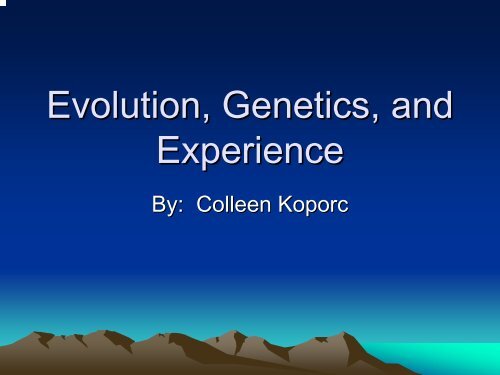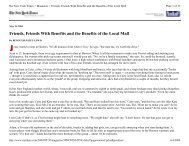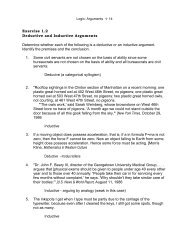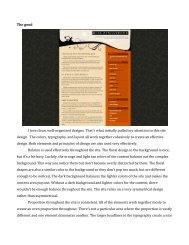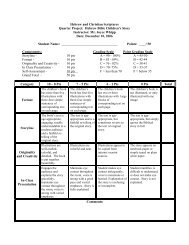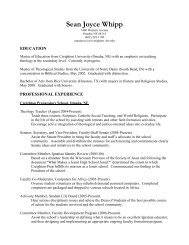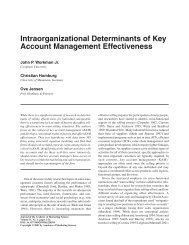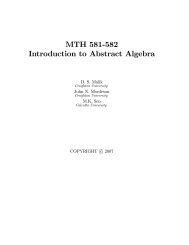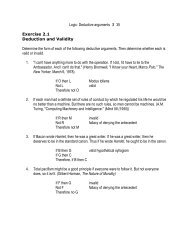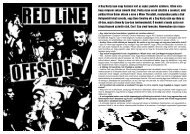Evolution, Genetics, and Experience
Evolution, Genetics, and Experience
Evolution, Genetics, and Experience
- No tags were found...
Create successful ePaper yourself
Turn your PDF publications into a flip-book with our unique Google optimized e-Paper software.
Evidence for Macroevolution• The fossil record• Striking structural similarities orhomologies• Selective breeding of plants <strong>and</strong> animalsex: dog species
Brief History of Human <strong>Evolution</strong>• Two types of hominids:Australopithecus <strong>and</strong> HomoScientists believe:Australopithecus evolvedapprox: 6 mya in Africa fromapesHomo species evolved fromAustralopithecus approx 2mya
Interesting Note:• Humans have had larger brains,opposable thumbs, <strong>and</strong> havewalked upright for over 100,000years• Artistic works did not appear untilapprox 40,000 yrs ago• Writing did not appear until 3,500yrs ago• Why?
Forces Behind Human <strong>Evolution</strong>• Natural selection• Mutation• R<strong>and</strong>om genetic drift• Population mating structure• Culture
Natural Selection• 3 types:• Directional selectionex: human brain size• Stabilizing selectionex: human birth weight• Disruptive selectionex: no known examples in human evolution
Mutations• Mutation: an error in the copying of DNA• 2 types: somatic <strong>and</strong> germinal• Most mutations are in somatic cells• Germinal mutations can introduce newgenetic material-source of variation• More likely to be passed on if beneficial orneutral
R<strong>and</strong>om Genetic Drift• Changes in allele frequencies over timedue to chance <strong>and</strong> chance alone• Genetic drift varies with population size• Effects of genetic drift decrease with largerpopulations
Population Mating StructureIncludes:geographical <strong>and</strong> physiologicalisolationimmigration/emigrationmate preferences-sexual selection
Culture• Culture: the transmission of information<strong>and</strong> behavior from one generation to thenextex: pass on info about medicine <strong>and</strong>sanitationCan influence evolution:ex: cultural ideas about abortion, birthcontrol, etc.
Culture Cont.• Travel allows people all over the world tomeet <strong>and</strong> mate• Humans no longer have geographicallyisolated populations
<strong>Evolution</strong> <strong>and</strong> Human Behavior• Many behaviors weexperience today maybe a product ofevolution• Ex: article about male<strong>and</strong> female matepreferences
Human Mate Preferences• Differences in matepreferences betweenmales <strong>and</strong> females• Are these evolvedbehaviors?• Do these preferencesstill apply today?
Human <strong>Evolution</strong> <strong>and</strong> OtherAnimals• We tend to treat humans differentlythan other animals-we usually cite mental or emotional abilitiesto support this• Are humans somehow different fromother animals?• If humans are or are not different,what ethical issues arise concerningtreatment of animals?
<strong>Evolution</strong> <strong>and</strong> Behavior• What other traits or behaviors may be aproduct of evolution?• Fear of spiders/snakes• Innate behavior of babies• Others?
Are we still evolving?
What would be required for humanevolution to occur?• Ex: evolution can be caused byenvironmental changes that favor oneform of a trait over another• However, humans are able to alter theenvironment• Could an environmental process such asglobal warming influence evolution?


